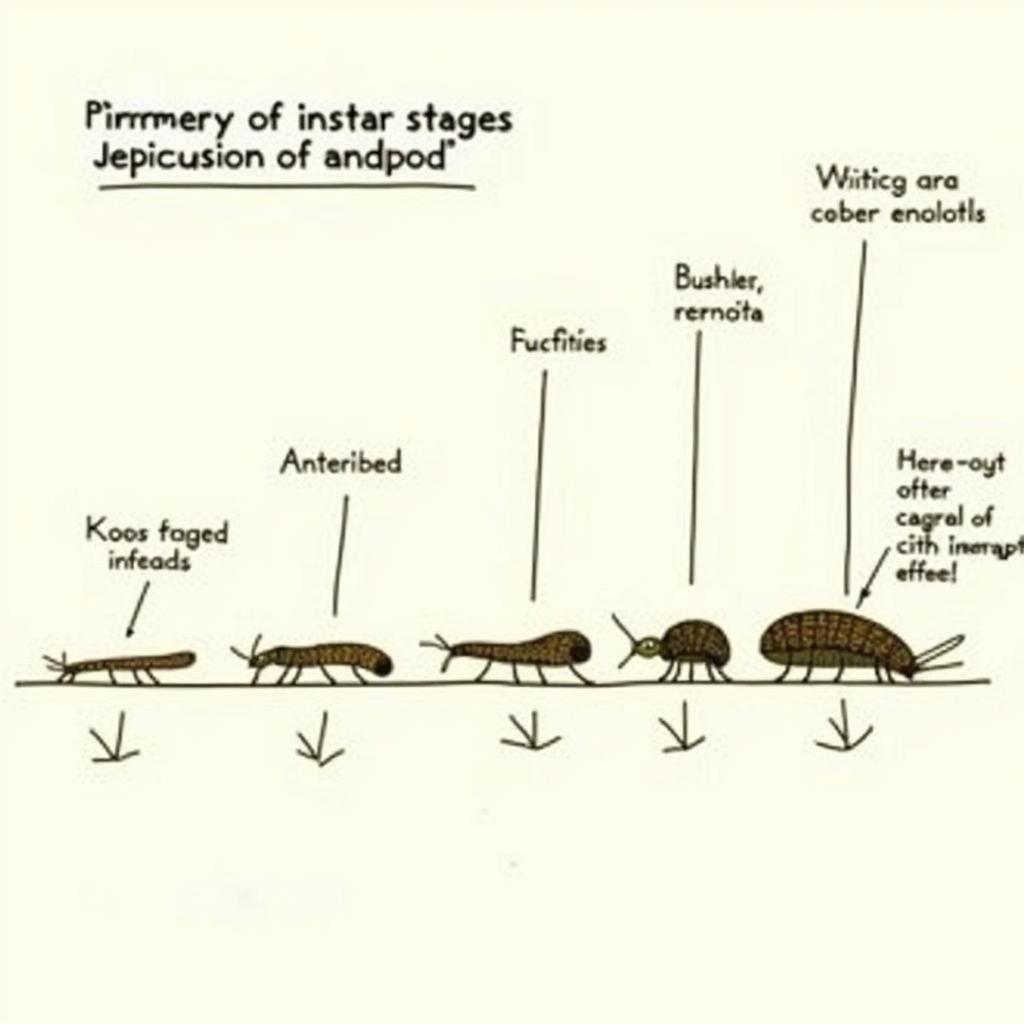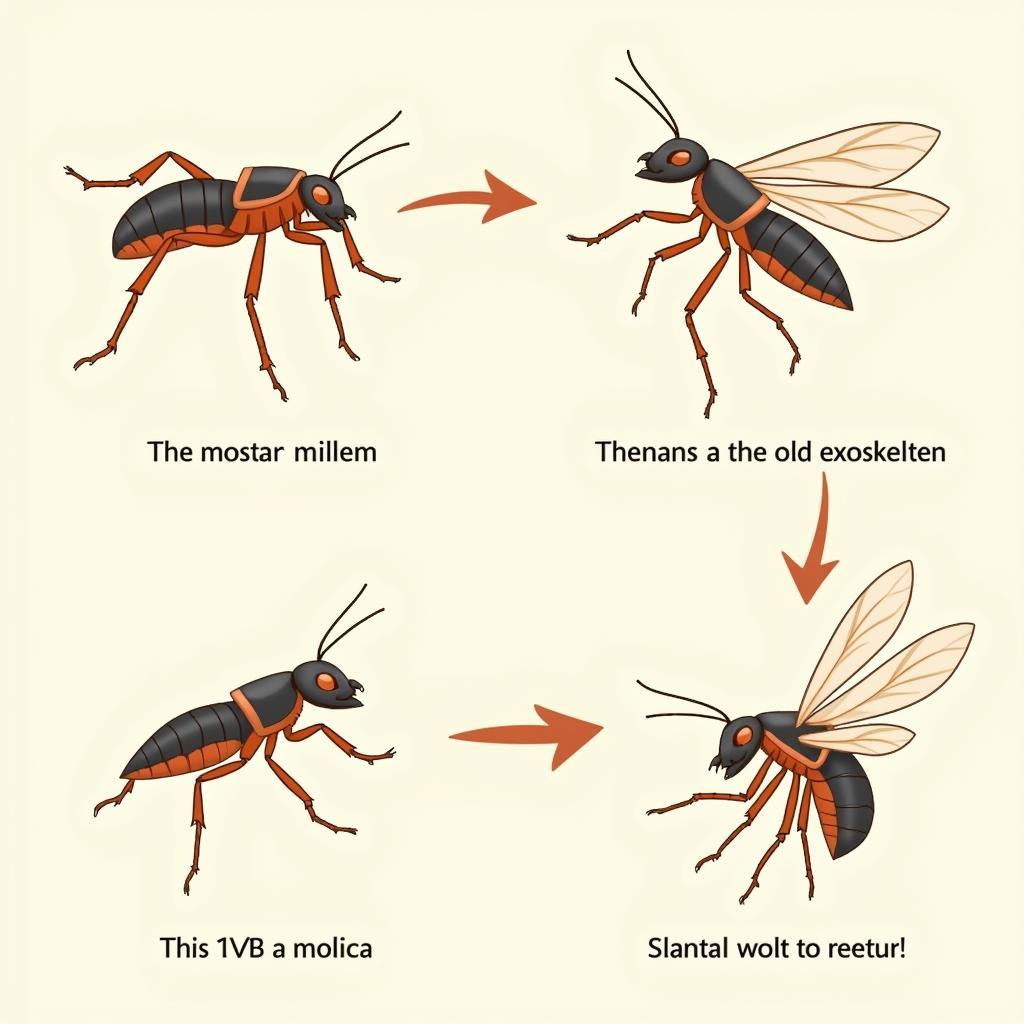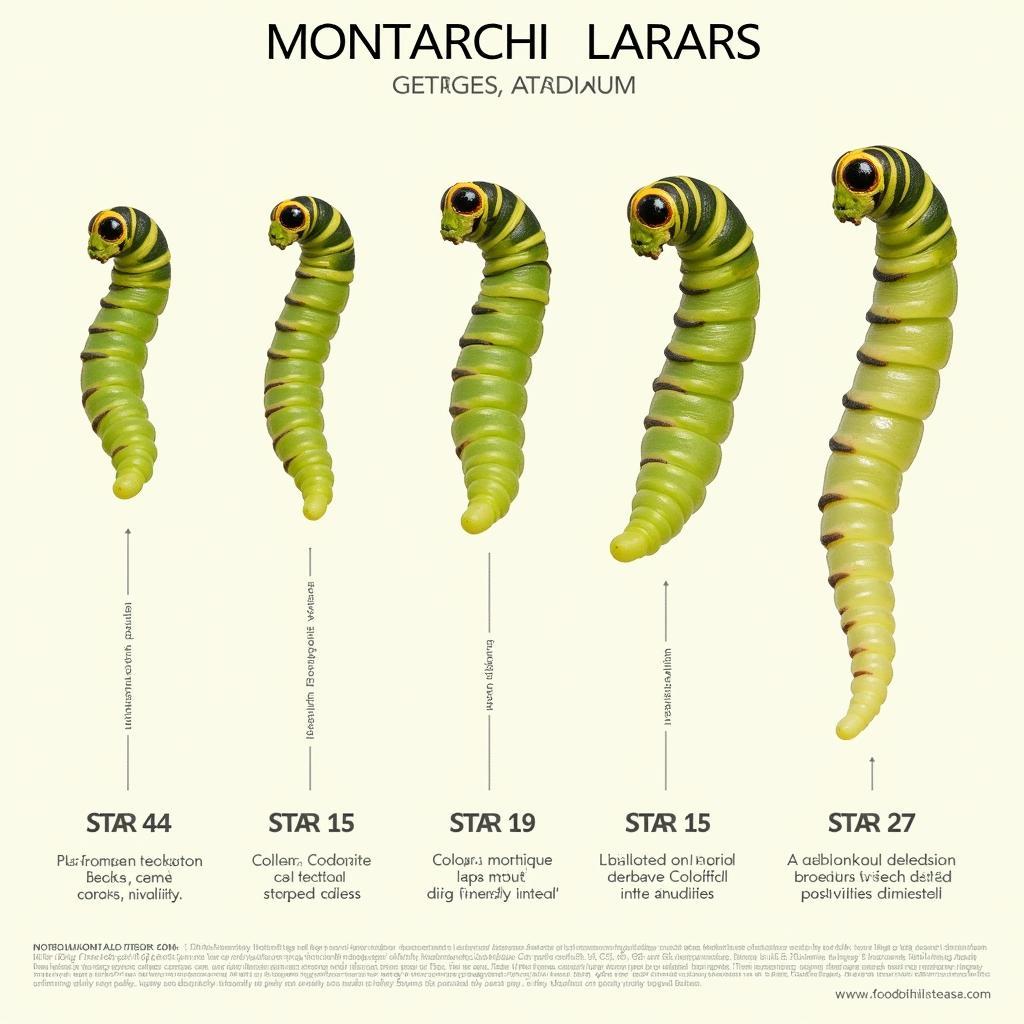Instar Research delves into the fascinating world of insect development, specifically focusing on the stages between molts, known as instars. This field of study unveils crucial insights into the growth, behavior, and ecological roles of insects, with implications spanning pest control, conservation, and our understanding of life itself.
What is Instar Research?
Instar research primarily examines the morphological changes, physiological processes, and behavioral adaptations that occur during each instar stage. Researchers in this field employ a variety of techniques to unravel the complexities of insect metamorphosis. These methods often include:
- Morphometry: Measuring various body parts, such as head capsule width or wing length, to track growth patterns and distinguish between instars.
- Molecular Analysis: Analyzing gene expression and protein synthesis to understand the underlying mechanisms driving metamorphosis.
- Behavioral Observations: Documenting changes in feeding habits, locomotion, and social interactions across different instars.
 Insect Instar Stages
Insect Instar Stages
Why is Instar Research Important?
Understanding the intricacies of insect development through instar research has far-reaching implications:
- Pest Management: Accurately identifying insect pests at different instar stages is crucial for implementing targeted and effective control measures.
- Conservation Efforts: Knowledge of instar-specific vulnerabilities and habitat requirements aids in developing conservation strategies for endangered insect species.
- Biological Research: Studying insect metamorphosis provides insights into fundamental biological processes like cell growth, differentiation, and regeneration, with potential applications in human medicine.
The Significance of Molting in Instar Development
Molting, the shedding of the exoskeleton, is a critical process that defines instar stages. As insects grow, their rigid exoskeletons become restrictive. Molting allows for a larger exoskeleton to be formed, accommodating the increased body size.
 Insect Molting Process
Insect Molting Process
Factors Influencing Instar Duration and Number
Various factors can influence the duration of each instar stage and the total number of instars an insect undergoes:
- Temperature: Environmental temperature plays a significant role in metabolic rates, affecting the speed of development.
- Food Availability: Adequate nutrition is essential for growth and can impact the timing of molts.
- Genetics: Species-specific genetic factors determine the typical instar patterns.
Case Study: Instar Research in Action
To illustrate the practical applications of instar research, consider the study of the monarch butterfly (Danaus plexippus). By carefully observing the morphological changes across its five instar stages, researchers have been able to:
- Identify optimal rearing conditions for captive breeding programs.
- Understand the impact of habitat loss and pesticide exposure on larval survival rates.
- Track migration patterns based on the instar stage at which butterflies are captured.
 Monarch Butterfly Instar Stages
Monarch Butterfly Instar Stages
Conclusion
Instar research provides invaluable knowledge about insect development, with wide-ranging implications for agriculture, conservation, and biological research. By unraveling the complexities of instar stages and molting processes, we gain a deeper appreciation for the remarkable adaptations of insects and their crucial roles in our ecosystems. Continued research in this field promises to uncover even more fascinating insights into the world of these incredible creatures.